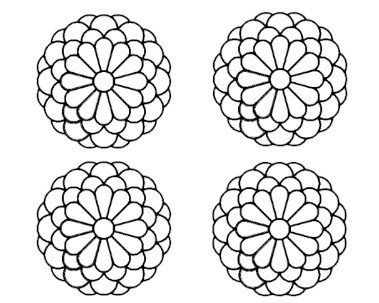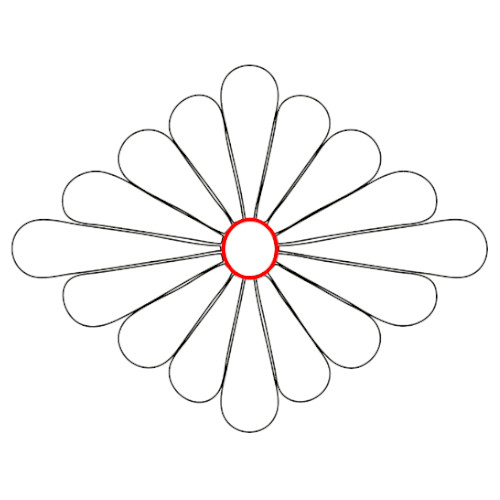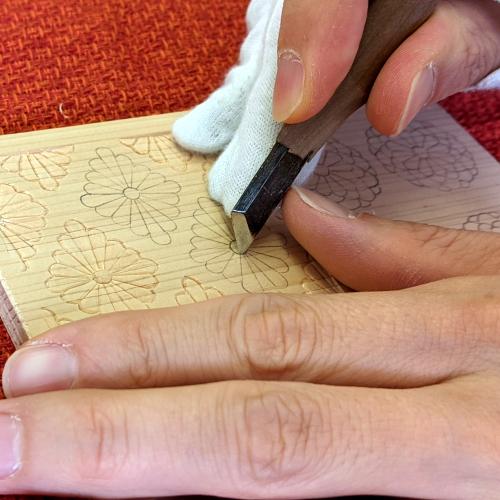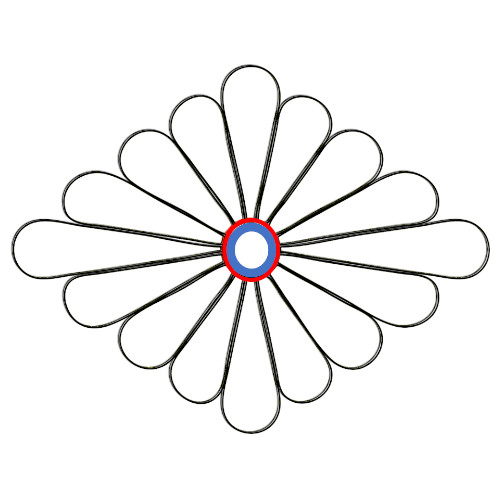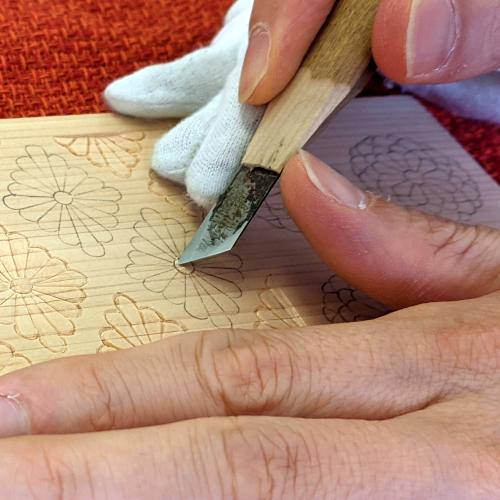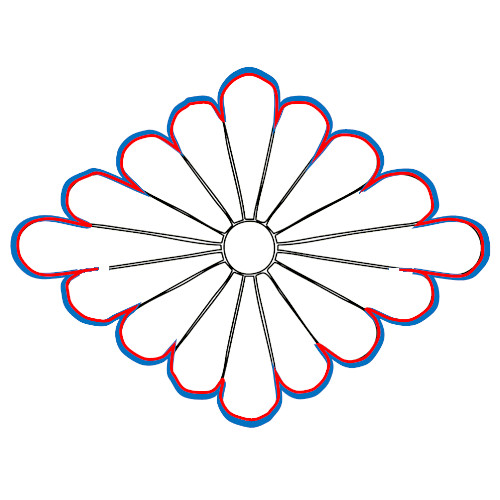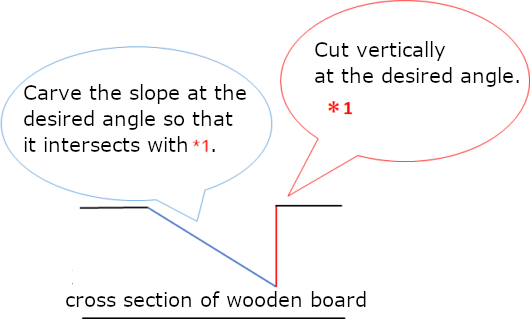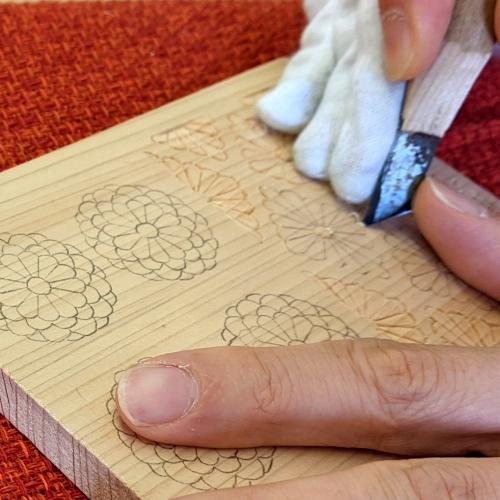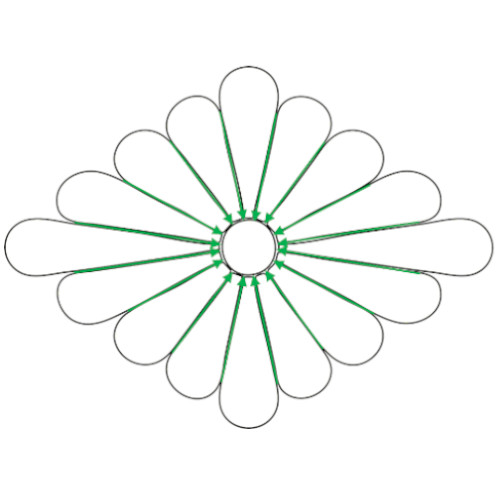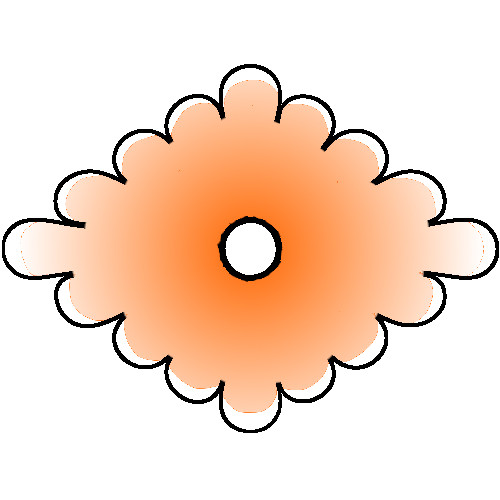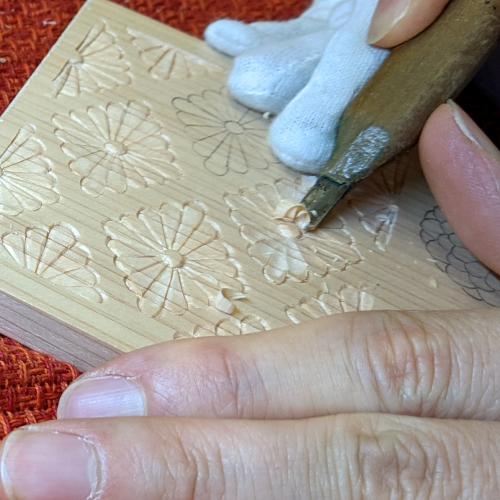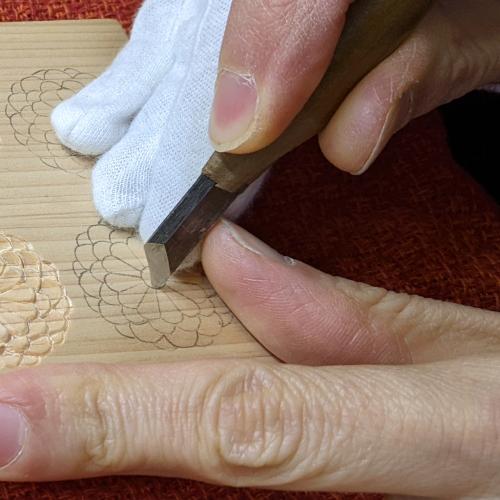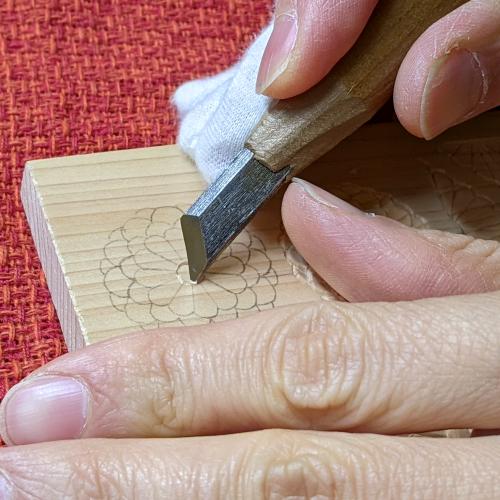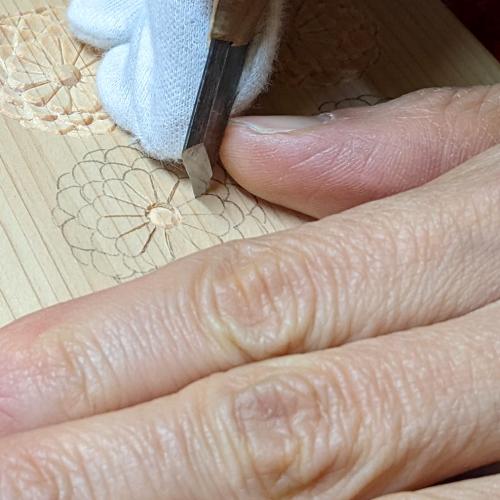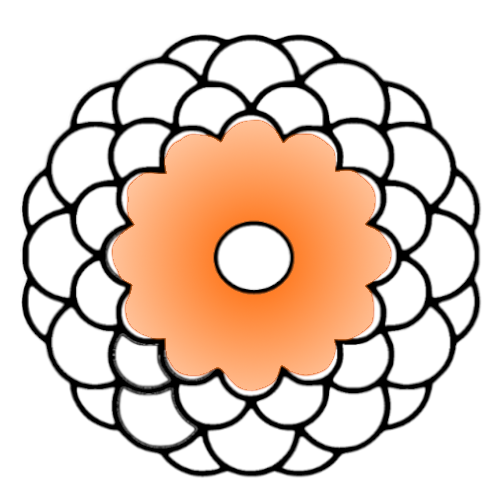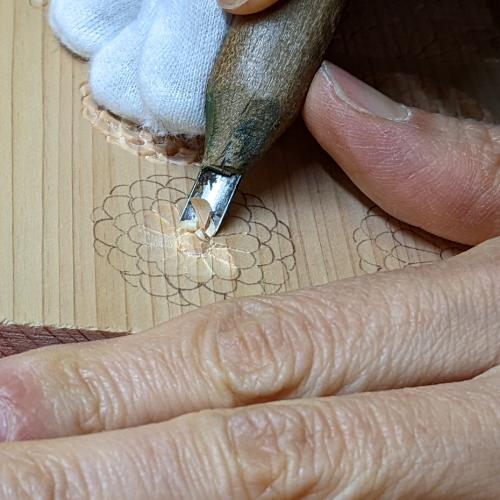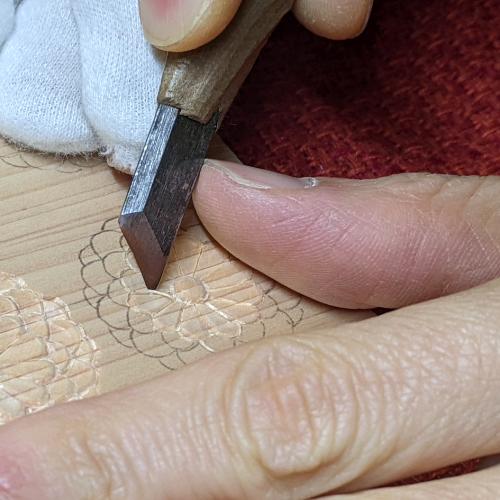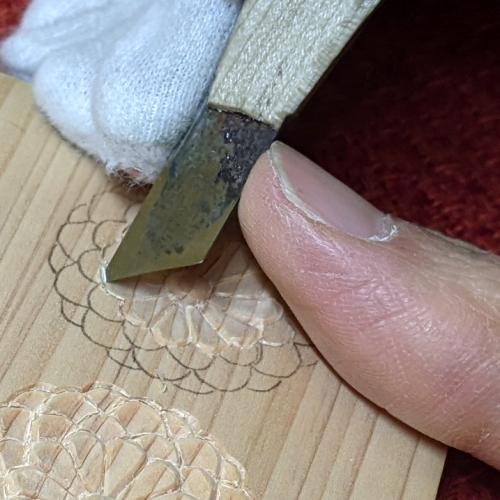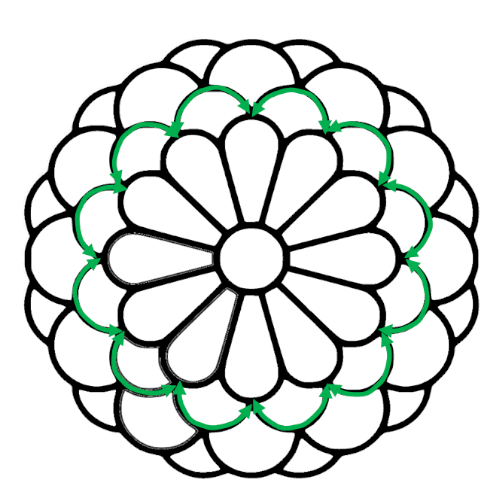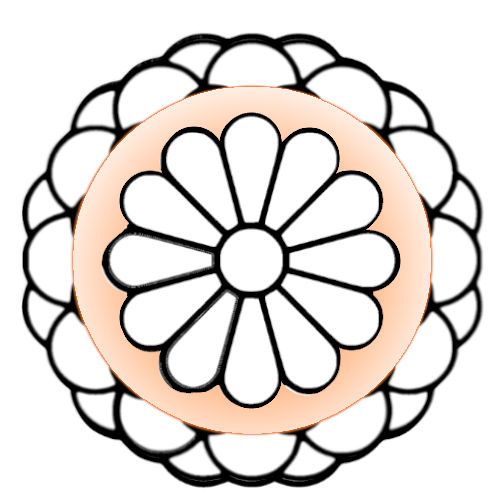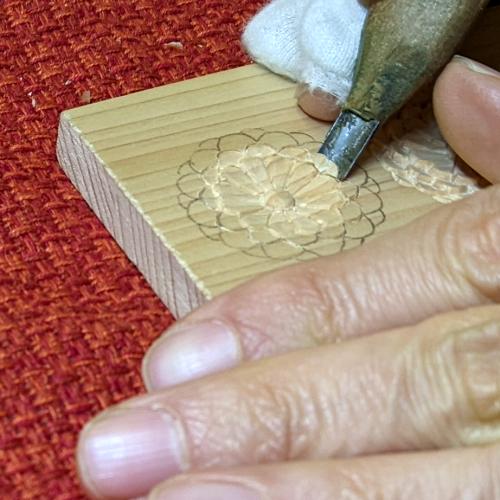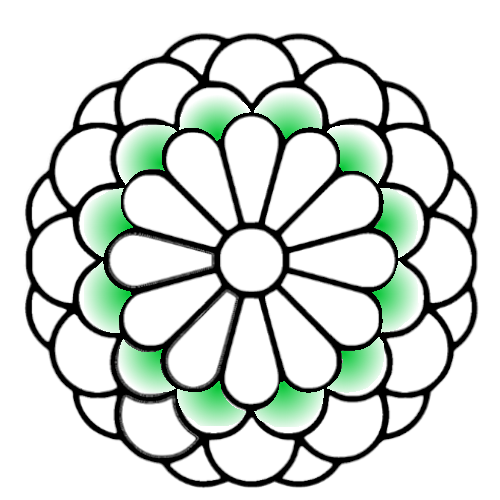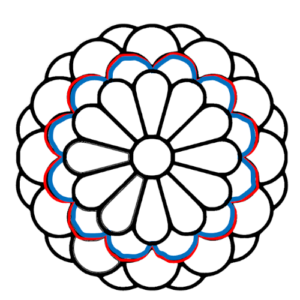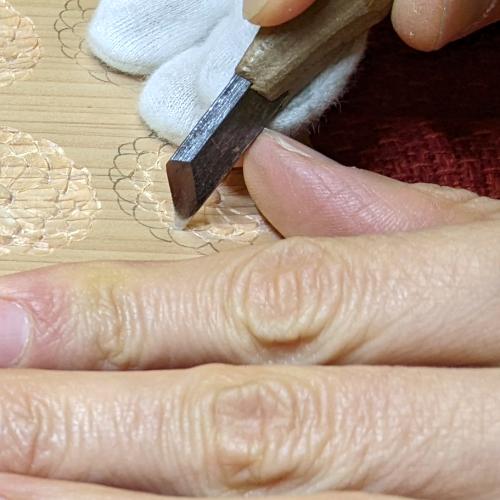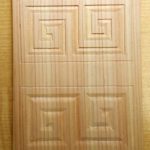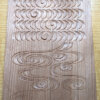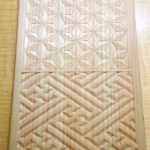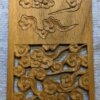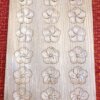How to carve patterns Part 13 ~Kikubishi and Yaegiku~
In this lesson, we’ll learn how to carve two chrysanthemum-inspired patterns:
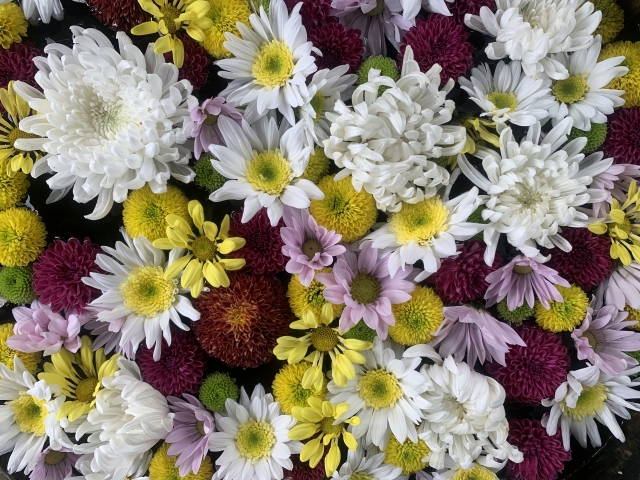
-
Kikubishi — a diamond-shaped chrysanthemum design.
-
Yaegiku — a full, double-layered chrysanthemum with many overlapping petals.
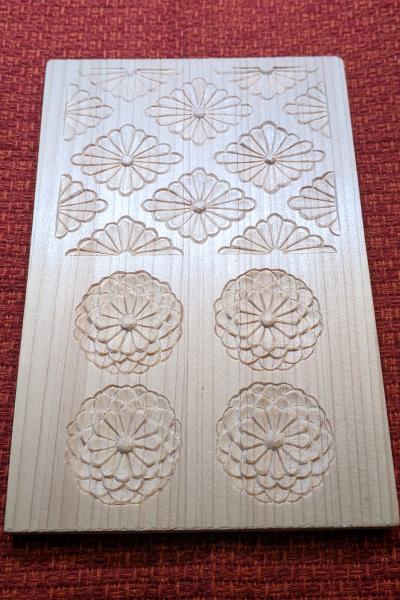
Tools Used
For this project, you’ll need:
-
A 9mm sharp chisel
-
A 6mm shallow round chisel
-
A 3mm shallow round chisel
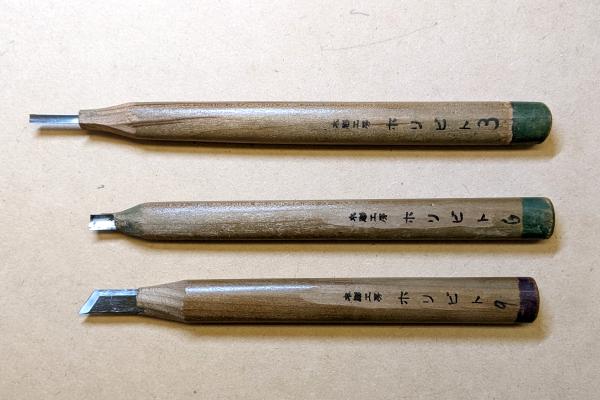
Preparation
Use carbon paper to trace the Kikubishi and Yaegiku designs onto a postcard-sized wooden board.
You can download the sketches here: [Kikubishi and Yaegiku PDF]
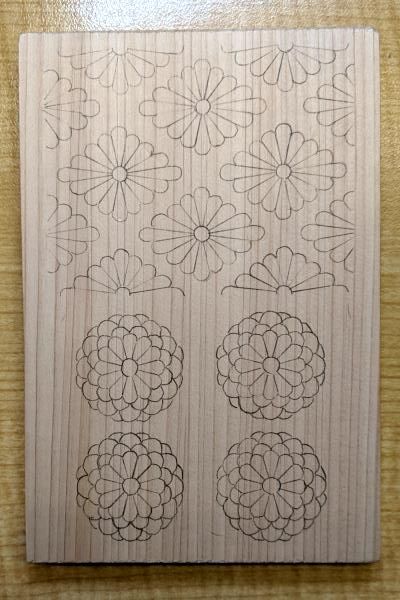
How to carve Kikubishi
Step 1: Red Line Cut
Begin by making a clean cut along the red line in the image below using the sharp chisel.
Step 2: Blue Slope
Using the red cut as a guide, carve a slope along the blue line with the sharp chisel, allowing it to intersect smoothly with the initial cut.

Step 3: Green Line Cut
Cut along the green line in the image below using the sharp chisel.
Make the cut gradually deeper in the direction of the arrow.
Step 4: Orange Petal Depth
Using the 6mm shallow round chisel, carve out the orange area so that it becomes deeper toward the center—the darker the color, the deeper the carving.
Step 5: Recut Faded Lines
If any of your previous cuts have become faint or disappeared during carving, go over them again at a consistent depth to restore definition.
Step 6: Blue Petal Corners
In the image below, round off or “roll up” the blue areas (the petal corners) so that they flow gently into the slope.
Repeat this process for each petal.
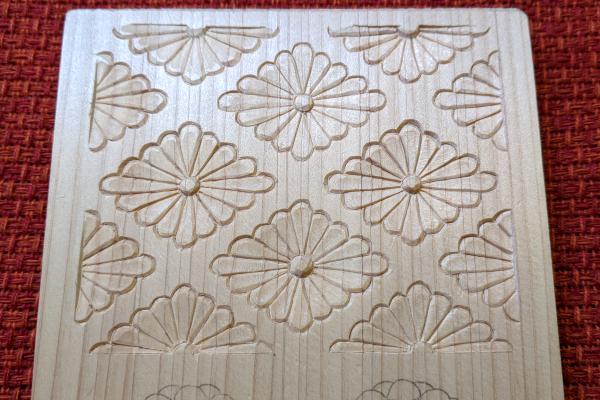
How to carve Yaegiku
Step 1: Red Line and Blue Corner
Carve along the red line with the sharp chisel, then round off the blue corner so that it intersects naturally with the red line—just as in Kikubishi.
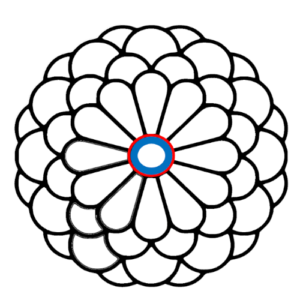
Step 2: Green Line Cut
Using the sharp chisel, carve along the green line, making the cut gradually deeper toward the arrow (same technique as Kikubishi).
Step 3: Orange Depth
With the 6mm shallow round chisel, carve the orange area deeper toward the center, based on the intensity of the color—just like with Kikubishi.
Step 4: Deeper Red and Green Cuts
Make a new cut along the red line at a consistent depth. Then carve the green line so that it gradually deepens in the direction of the arrow.

Step 5: Blue Petal Corners
Round off or roll up the blue petal corners as shown.
Apply this technique to all petals of similar shape.
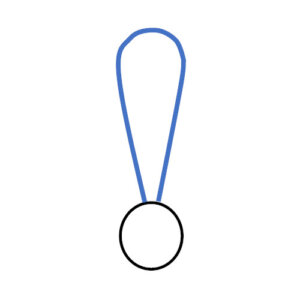
Step 6: Additional Depth and Plate Shape
-
Carve along the green line below, making it deeper toward the arrow.
-
Shape the orange area into a shallow dish-like form using the 6mm shallow round chisel, with more depth in the darker central region.
Step 7: Inner Petal Detail
Use the 3mm shallow round chisel to carve the green areas deeper in the center, where the color is darkest.
Step 8: Outer Petals
For the red line, make a cut at a consistent depth.
Then use the sharp chisel to shape a slope on the blue petal corner, intersecting smoothly with the red line.
Repeat this process for all remaining outer petals.

How to carve patterns
- From the lattice to the scales
- Raimon
- Asanoha and Sayagata
- Seigaiha and Sippo-Tsunagi
- Higaki and Kumikikko
- Mimasu-Tsunagi and Mimasu-Chirashi
- Ryusui
- Bundo-Tsunagi and Tatewaku
- Yamajimon and Misujidate
- Kemanmon and Gobosei
- Chidori and Chidori-Goshi
- Nejiume (Twisted plum)
- Kikubishi and Yaegiku ←Current page displayed
- Ichimatsu and Sankuzushi
- Kikko and Yagasuri
- Clouds
- Waves


